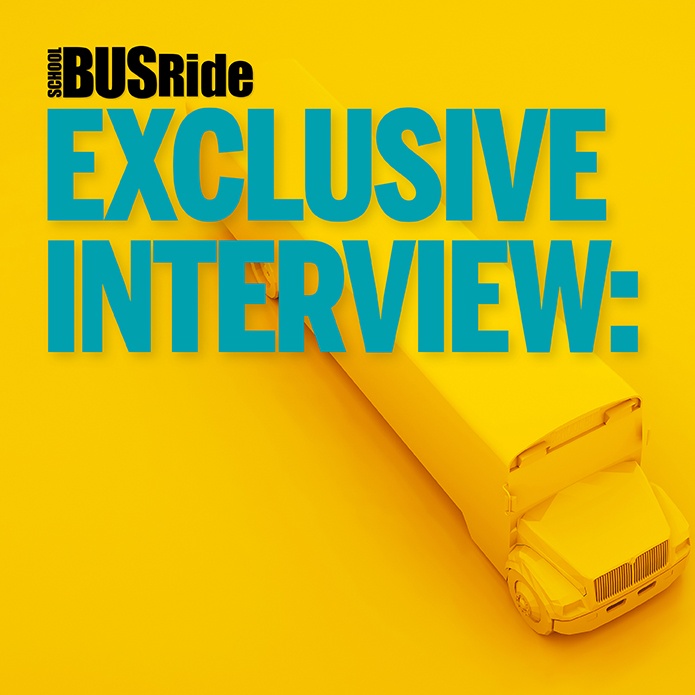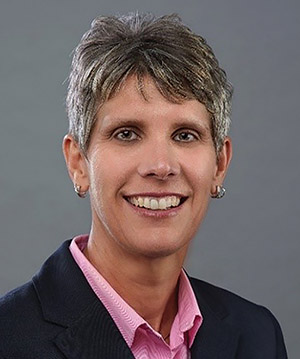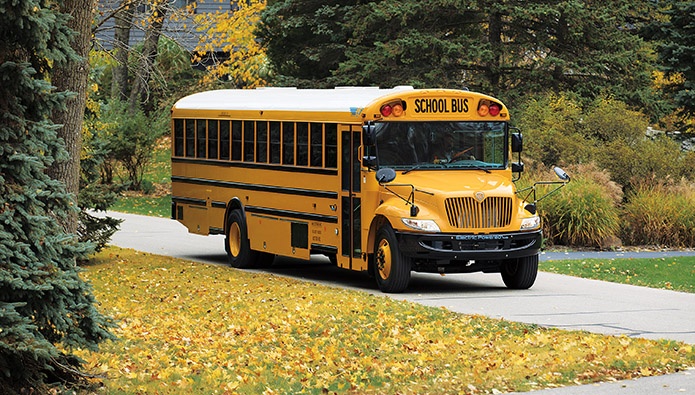
School BUSRide recently spoke with Trish Reed, vice president / general manager of IC Bus at Navistar. Reed provided her insight on the most significant industry developments of the past five years, speculated on future developments, and outlined how IC Bus plans to meet these changes head-on.

Please provide an overview of your history in the industry
Coming up in July will be 32 years with Navistar. I started right out of college with Navistar Financial and spent 20 years there in various, operational roles. Mostly front line, interacting with dealers and customers, both truck and school bus. I then led a specialty parts division, where we focused on light-duty parts. Along with light duty, which included Type A buses, I interacted with dealers and customers.
Then, about six years ago, I had an opportunity to be general manager, vice president of IC Bus. It was a wonderful opportunity because throughout my career I always thought there was something special about the school bus industry and the people in it. To be a part of an iconic brand in IC Bus, and to work with our dealers, is very exciting.
What do you think have been the most significant changes in pupil transportation within the last five years?
Five years ago, propane gas was just being introduced. Now, we are looking at various powertrain choices between diesel and propane. Gasoline was introduced and brought back into the industry in that same timeframe. Then, obviously, electric options are coming.
Student and bus tracking, student ridership, Wi-Fi coming onto the school bus, and connected diagnostics. Supporting the customer with predictive analytics and being able to manage fleets that way.
We play in that with our own command connection so that has been a big change in the evolution of connected space. The next thing would be safety technology. School buses are the safest way for kids to get to and from school. Bringing automotive technology into the school bus, like we did in 2018 with active collision mitigation and electronic stability control. Taking some pretty inexpensive features that most of us have on our automobiles today and making that standard.
The external cameras, the stop-arm cameras, the lighted school bus sign, anything that we can do to make the bus safer is a trend we are continuing to see. The amount of technology that has been added on to school buses has been exponential in the last five years.
In dealing with driver shortage, we have seen a big focus on best-in-class driver ergonomics. The culture in a transportation department to recruit and retain drivers, and then paying benefits – that has been a big change, a big focus for the school bus industry.
Lastly, and top of mind, is the pandemic and how that has impacted the industry in the last year in terms of ridership. Obviously, it delayed replacement cycles for school bus purchases and had a lot of trickle-down effect. I think the industry has probably lost a lot of drivers and technicians as a result.
What significant changes do you hope to see in the upcoming five years?
Firstly, the connected integration of technology and safety features. What is really going to be critical is figuring out how to integrate more of the safety technology as an OEM built-in option for the school bus with less aftermarket add-ons.
This is important. Customers do not want to feel like they work at NASA with five screens trying to manage everything from beta feeds.
Some of us probably have an app in our car that lets us know everything that is happening around us, and that would be great to really make things safe for loading and unloading passengers onto a school bus. I think we will get there and that will be a game changer within the school bus industry.
This integration of technology and safety features on a school bus will be a trend that we see going forward. One of those pieces is powertrain choices and electric propulsion, that is probably the biggest change coming in the school industry. Obviously, some of that is being driven by government regulation incentives. We are seeing the California Air Resource Board (CARB) and other states with Memorandums of Understanding following CARB.
That is really going to move the needle away from diesel and into electric and gasoline, because gasoline will probably be able to meet those standards as well along with propane. The biggest question is, between now and 2025, what does electric vehicle (EV) adoption look like?
Driven by the regulation and all the other things we are seeing within the Biden administration, it is definitely going to be a big and impactful change. It is not like introducing a propane or gasoline engine. This is a big, big change and there is an impact to service and maintenance. The dealer support model might look different.
As exciting as it is, there is a lot of work to do in this industry – and our customers are going to have to digest a lot of change coming with the adoption of electric.

How is IC Bus positioned to meet those changes?
Our goal is to be a leader in safety in the school bus industry. It is an opportunity to bring this automotive technology into the school bus faster and in the most economical way for our customers. We have been a pioneer in that.
Being able to integrate these features into the school bus industry as we continue to introduce future safety pieces. As Navistar we have a huge advantage because we can leverage our truck scale and all the safety components that go on to our trucks. That makes it easy for us to standardize electric stability control and active collision mitigation in our school buses.
We have the best range of electric vehicles in the industry, with three levels of regenerative braking, V2G ready. If we really want to make electric successful in the school bus industry, we all must be very thoughtful about the product, the infrastructure, and everything surrounding it. That is what we have been doing. We are not here to push customers into electric. We are here to help the customer make the best decision that is right for them and their fleet, their students, and parents. That is important, as we move forward, for the longevity of electric.
How do you view the future of alternative propulsion, including electric vehicles (EV), progressing? How do you see other forms of alternative propulsion staking their claim?
There are still a lot of questions about the adoption between now and 2025. Obviously, a lot of news that we have seen around the Biden administration is supporting zero-emissions. We are active in that, but again, we are very prudent to say infrastructure is a big piece of it. You have to have the infrastructure in place to make zero-emissions adoption successful. The question is how fast does this go between now and 2025? Some of that depends on the customer experience. With the electric school bus, I do think by 2030 it will be close to, if not majority, of new bus sales.
It makes sense for a lot of reasons. We work through some of these growing and learning pains. By the time we get to 2030, it will be a proven go-to technology within the school bus world. We were thoughtful about bringing the product to market. We have a lot of quotes in the pipeline, which is exciting. Electric is exciting.
E-mobility and emerging technologies are really what is on the horizon in the future. That takes significant investment, time, and energy. I think diesel will continue to be a player in the market until we get to 2030. We might see an increase in gasoline adoption, as some states move to CARB. The question is, what about propane? CNG is maybe one percent of new school bus sales. I just do not see CNG staying in play with the CARB movement.
Many states are endorsing major EV incentives. Do you think that kind of government direction can help with adoption in smaller cities?
It takes funding, infrastructure, and government regulation to really drive that change. Government regulation and whatever the current administration is willing to do to support the funding of infrastructure and adoption of EV is what will really drive that implementation.
The important thing is buses must be on time to pick up students. How do we make sure that continues to happen with the transition to electric? There are a lot of considerations that come with supporting that adoption.
California is certainly taking the lead, but you have many other states that have really committed to zero-emissions. It takes time to manage that change, but any zero-emission vehicles we can get into the market serves our customer needs while managing climate change and that is the right thing to do.
For those who want to start the process of incorporating EV into their diesel fleets, what advice do you offer when it comes to preliminary steps?
When it comes to electric you really must take a consultant approach. Ask the right questions to really understand customer needs and wants. Why are they interested? Why are they leaning towards electric? Based on that, if electric is the answer, our NEXT eMOBILITY Solutions team comes in. The first thing we have learned is, depending on how many electric buses you want to deploy in your fleet, think about the bandwidth of electricity coming into your facility and evaluating that.
Based on the number of chargers you may want or need to support the number of buses you are bringing in, do you have enough electricity in your building to support that? Then, obviously, the infrastructure of the charging stations. We have an infrastructure partner called In-Charged that comes in and does an onsite evaluation around the charging infrastructure. Customers need to consider their plan, not just year one, but year two, year three, year four, year five. Make sure you have the flexibility to expand your infrastructure, have the right infrastructure in place to support what your vision is three to five years out.
That is really important. The other thing is ensuring that customers are making the right decisions concerning charging stations. Those are the type of considerations that need to be made for a successful implementation and deployment of electric vehicles. It is a lot of work upfront. Walking through the process together with the customer and making sure that they are fully prepared to make this transition.
Looking specifically at technology, what do you think is going to impact this industry most significantly in the future of pupil transportation?
There are so many things at play. Electric and the significance of everything technology related to electric, stepping away from power train choice and moving to the school bus in general. I think the more integrated, automotive technology coming on the school bus will make it more connected, safer, and easier for our customers in all facets. It will make the job easier for the driver, the fleet manager, the transportation director, the parent, the school administrator, and the student.
The bus will probably never be at the level of autonomy to where you do not need a driver, but how do you leverage all that technology to make the driver’s job easier and make the bus even safer than it already is?
We are all critically aware of the driver, mechanic, and tech shortage. In terms of training, how can we effectively prepare our technicians for EV mechanics?
What we are seeing early on with EV adoption, is that if you start implementing electric into your fleet today, you still have diesel buses tomorrow. The average life of a school bus is 16 years. You are going to have diesel or other internal combustion engines in your fleet for a long time and they will need to be maintained. When it comes to customers, are dealers doing enough through mobile maintenance to support their electric fleets? If they are already short of technicians, how do you introduce the high voltage, electric school bus into their fleet so they can manage and digest it accordingly?
We need more mobile maintenance on our side, diagnostics like our On-Command Connection. In order for the dealer to effectively monitor vehicle upkeep and provide customer support, we need to understand what is happening inside the school bus.
Within the next year we are hoping to introduce electric into our technician training. You are dealing with a lot of high voltage, so I do not think we can reduce the seriousness and the degree of change that our customers are facing.
When it comes to diesel technician schooling, how do you begin changing your curriculum to prepare future technicians? We think there might be an opportunity for a whole different degree of recruitment there. Does the appeal of a technician’s job look different because you are working on electric vehicles? This perception that people have, which is a very old perception of the dirty, greasy engine. Does it change that appeal and make it even easier to recruit students into automotive technology or commercial technician technology?


